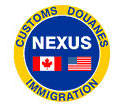I am extremely frustrated by how partisan politics has become. In talking with lobbyists and lawmakers about the good old days of lawmaking, in both Washington and Lansing, it used to be that during the day, legislators would fight like crazy for their issues, they would debate and argue for what they thought was right and in the best interest of the people. And after a hard days work, they would shake hands and grab a drink or have dinner. In fact that model still works in various Parliaments, including the EU in Brussels.
Not today and not in America. In the Michigan Legislature you are lucky if they know each others name. In Washington, Members of Congress take their cues from their party leadership and everyone points fingers at the other person to say why they are not making progress. And that is in a non-election year.
So in Washington, you have a highway transportation bill that expired a few years ago that still has not been authorized -- only extended for two years. The education bill also expired and has not been authorized, leaving a generation behind instead of "no child," punctuated by an election year that brings little hope of progress to a bitter end, at least and until sometime next year.
In Lansing and Detroit we are still discussing bridges and transit. In fact, in 1976, President Gerald Ford offered funds to build a rail transit system in southeast Michigan. Instead, we just got the People Mover and today, we are still talking about the need for regional transportation.
Today, there is a lack of progress in moving forward on the difficult decisions that affect our nation and impact our state. Some would call it an impasse while others just chalk it up to politics. However, these are issues that can be resolved and resolved in a way that preserves the relationships, maintains the political differences and helps move the agenda forward collectively.
The use of ADR processes by the courts and federal government has been widely celebrated as a more efficient and cost effective method of conflict resolution. Mediation is a voluntary, confidential process in which a trained, impartial mediator helps people examine their mutual problems, identify and consider options and carefully consider possible resolutions. A mediator has the experience to bring disputing parties together and help them draw out a successful resolution while preventing an impasse during the negotiations, or otherwise prevent the discussions from breaking down. Unlike a judge or arbitrator, a mediator does not make the decisions nor do they offer solutions. They help separate the politics from the process, help the parties find a common ground, build trust and identify potential solutions to agree on.
Public policy dispute resolution focuses on the resolution of issues affecting the public, such as: Transportation; land use, special education, election districts and healthcare. With public policy disputes, the issues tend to be a bit more polarizing, emotional and there are often a number of stakeholders from the community, including non-profits and business groups, and governments at a local, state and federal level.
Whether it is a public policy dispute or a dispute between neighbors, the goal of public any dispute resolution is to save money, preserve relationships and take control over the decisions. When it involves a public policy dispute, it is helpful and most effective if it creates the opportunity for all voices to be heard. It is a process being used in the planning process of multiple projects, including economic development projects in Austin, Texas and Salt Lake City Utah.
In any mediation, the first step in the mediation process is to get both parties to agree to use a mediator. That is actually the first agreement both parties make together and we are on the way to developing trust and building a relationship.
While many states have dispute resolution clauses in key legislation or dispute resolution centers at universities, the State of Michigan does not. The ADR Section to the State Bar of Michigan, continues to talk with universities about creating a "Center for Public Policy Dispute Resolution Services," and continues to talk with legislators. However, since no university has yet to step forward in creating such a center, in part due to funding, The ADR Section is trying to show by example, the benefits of ADR.
The National Policy Consensus Center has found that legislators are becoming problem solvers, facilitators and conveners of issues vital to their state. Yet in Detroit and throughout the State of Michigan, we still cannot accomplish enough to move the state forward. It is time to rebuild and repair relationships in the City of Detroit and throughout the State of Michigan. It is time the people we elected to lead our government and help move it forward. It is time that they ask for someone, or a team of neutrals to step in and help find resolution throughout all the chaos.
Policymakers can avoid making difficult decisions on controversial issues by creating a process by which public policy disputes can be resolved. Through a facilitated consensual process, issues such as consent agreements, transit, new infrastructure projects, transit and councils-by-district can be avoided and we can all move on to other issues to help our city, state and nation move forward.
If we just talked earlier and learned about the real issues underlying the bigger ones, than perhaps today, we would be talking more about basketball instead about a bridge, debt ceilings, transit or a consent agreement. It is time we brought in neutrals to help resolve the bigger issues plaguing our nation.
About Daniel Cherrin
Daniel is a public relations + affairs executive who just happens to be a lawyer. Cherrin also is a certified, SCAO-trained mediator. He served as the Communications Director for the City of Detroit and Press Secretary to former Detroit Mayor, Kenneth V. Cockrel. He also has served as spokesperson for an 1800 MW off shore wind farm in Southwestern Ontario and also for Mackinac Island. He also led efforts to support a deep injection well in Romulus, Mich. He currently serves as a spokesperson for The Ann Arbor Art Fair and advises a number of clients through a variety of crises, B2B marketing, brand development and lobbying. This includes the Detroit Windsor Tunnel, Detroit Wayne County Port Authority, City of Windsor, ONT, Grand River and Mentor Ohio (on a proposed Lake Erie ferry project between Ohio and Ontario), Cassidy Turley, Vistage International and Guardian Industries among others. For more information, see http://fraserlawfirm.com/ourlawyers/lawyers/profile/daniel_j_cherrin.
 Celebrating 40 Years of Enriching Lives & Erasing Barriers -- JARC
JARC, a nonprofit organization serving people with developmental disabilities and their families, in a variety of ways, from housing to in-home respite care, to advocacy in and around Detroit, celebrated their 40th Anniversary in 2009. They retained North Coast Strategies to help celebrate 40 years of serving the community and the dedication of their 20th group home, what is to be believed, the nation’s first barrier-free green home.
Celebrating 40 Years of Enriching Lives & Erasing Barriers -- JARC
JARC, a nonprofit organization serving people with developmental disabilities and their families, in a variety of ways, from housing to in-home respite care, to advocacy in and around Detroit, celebrated their 40th Anniversary in 2009. They retained North Coast Strategies to help celebrate 40 years of serving the community and the dedication of their 20th group home, what is to be believed, the nation’s first barrier-free green home.






